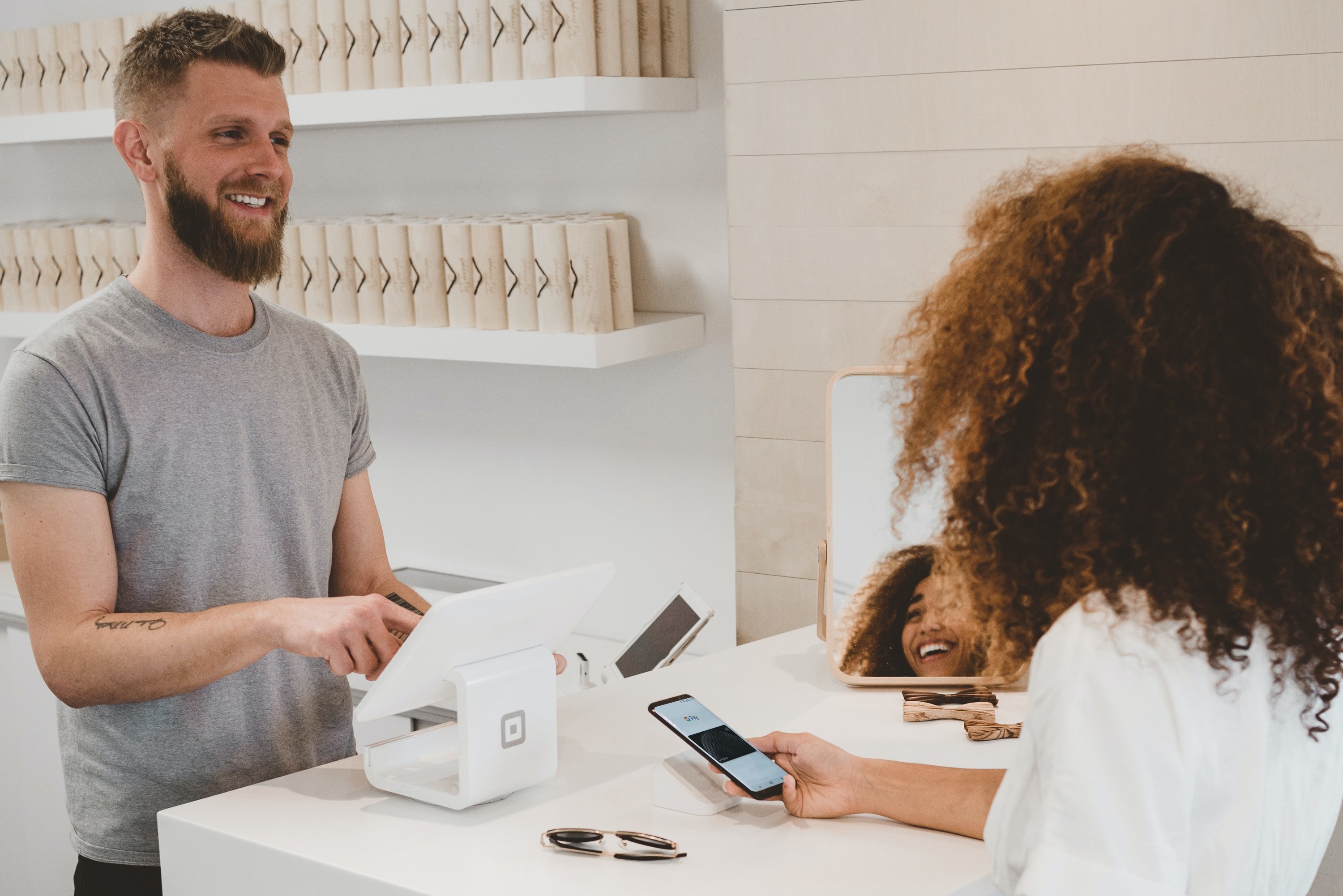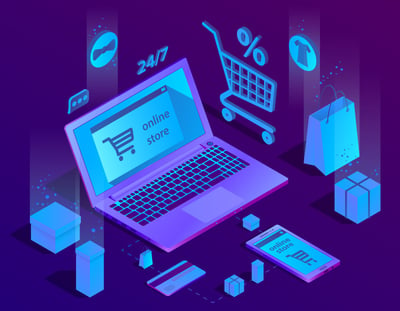July 28, 2023
 by Pulkit Jain / July 28, 2023
by Pulkit Jain / July 28, 2023

In today's consumer-driven market, the modern customer demands personalized experiences that cater to their unique preferences and needs.
Brands are increasingly aware of this growing desire for personalization. However, the question remains - are they listening?
Developing the right customer engagement strategies and tailoring products and services to their individual tastes can foster loyalty and drive business success. Brands must embrace active listening and genuine personalization to stay relevant and competitive in this dynamic landscape.
A personalized customer experience refers to tailoring interactions, products, and services to meet individual customers' unique preferences, needs, and behaviors.
Building personalized customer experiences involves using customer data, such as purchase history, browsing behavior, and demographics. This helps create relevant and targeted customer experiences across various touchpoints, such as websites, mobile apps, emails, and in-store interactions.
The goal of building personalized experiences should be to enhance customer satisfaction, engagement, and loyalty by delivering personalized content, product recommendations, and offers that resonate with each customer on a personal level.
Consumers across the globe are frustrated by a lack of personalization from their favorite brands.
Customers expect personalized and relevant interactions with their favorite brands. But brands are failing to meet these expectations.
This article explores the importance of delivering personalized customer experiences, the strategies you must implement, and the challenges you must look out for.
Personalized customer experiences positively impact customer satisfaction, conversions, competitiveness, and long-term customer loyalty.
Personalization allows you to understand your customer's unique preferences, needs, and behaviors.
By tailoring products, services, and interactions to individual customers, you can deliver a relevant experience, leading to a more positive perception of your brand and, ultimately, high customer retention.
Relevant experiences with your brand forge deeper connections with your customers.
By delivering relevant content, recommendations, and offers based on your customer’s preferences, you can engage customers on a more personalized level and foster stronger relationships. Higher engagement also leads to an improvement in brand recall and mindshare.
Personalization helps you directly increase the likelihood of conversions.
By understanding customers' interests, purchase history, and browsing behavior, you can predict and provide your customers with the right product at the right time. It could be a product they want to purchase, information about a recently subscribed service, or an update on a pending customer service ticket.
A highly personalized customer experience will set you apart in today's competitive market.
Consumers value and appreciate personalized interactions. As long as you can deliver a unique and tailored experience, your customers are more likely to increase their frequency of visits and prefer your products and services.
Personalization fosters a sense of loyalty and trust between you and your customers. When customers feel understood and valued, they are more likely to remain loyal and recommend your brand to their friends and family via positive word-of-mouth recommendations.
Referral customers have zero to very low acquisition costs (CAC) and tend to be higher spenders than other customers.
Gather customer information beyond demographics, such as preferences, purchase history, and browsing behavior. Use analytics tools to gain insights and understand your customers better.
Group your customers into different segments based on common characteristics or behaviors. This allows you to add an extra layer of relevance to your communications by tailoring your messages to specific cohorts, ensuring a more personalized experience.
Utilize CRM software to centralize customer data, track interactions, and manage relationships. A CRM platform helps you keep a check on customer preferences and their actions, creating more opportunities to personalize brand communication.
Tailor your messages and content to match the preferences and needs of individual customers. Use their names, reference browsing actions, and deliver relevant offers via various communication channels such as email, SMS, push notifications, social media ads, etc.
Leverage customer data and purchase history to provide personalized product recommendations. Use artificial intelligence (AI) and machine learning (ML) to suggest products or new categories that align with your customer’s preferences and buying patterns.
Offer self-service tools, such as FAQs, knowledge bases, or chatbots, that provide personalized answers and solutions to customer inquiries. This allows your customers to find information quickly and efficiently, drastically reducing manual interactions and first response times.
Provide exclusive discounts and offers tailored to customers' interests, purchase history, or loyalty status. This makes customers feel valued and encourages them to return to your brand for repeat purchases.
Create loyalty programs that reward customers for their repeat business. Offer personalized rewards and incentives based on their preferences, purchase history, or engagement levels with your brand.
Equip your customer-facing employees with the knowledge and tools to deliver personalized experiences. Train them to understand and anticipate customer needs based on past interactions and empower them to make customer-centric decisions.
Encourage customers to provide feedback on their experiences and listen attentively to their suggestions. Act on the feedback received to improve and demonstrate to customers that their input is heard and valued.
Retail businesses have begun recognizing the importance of providing personalized experiences to customers, even in physical stores.
By tailoring the shopping experience to individual preferences and needs, you can enhance customer satisfaction, drive engagement, and foster long-term loyalty.
Here are some strategies for creating a personalized in-store experience for customers.
Leverage customer data and insights to personalize interactions.
Modern customer data and engagement platforms allow you to capture and analyze purchase history, preferences, and past interactions. Equip store staff with access to this information, enabling them to provide tailored recommendations and offers based on individual customer profiles.
Implement technologies such as RFID tags or beacons to track customer movements within the store.
Analyzing this data lets you provide customers with real-time, personalized product recommendations as they navigate the store. These recommendations can be shown via mobile apps, digital signages, and kiosks.
Develop mobile app features that allow customers to create wishlists, shopping profiles, save preferences, and receive personalized offers.
Incorporate features like in-store navigation to guide customers to specific products or sections based on their preferences. Push notifications can be used to send personalized offers or alert customers about exclusive promotions as they move through the store.
Set up stations within the store where customers can customize or personalize products according to their preferences.
For example, a station where customers can design their own t-shirts, select custom engravings, or personalize product packaging. This offers a unique experience and allows customers to feel a sense of individuality and connection with your brand.
Actively seek feedback from customers regarding their in-store experience.
This can be done through surveys, feedback kiosks, or social media platforms. Analyze the feedback received and make necessary improvements to address any pain points or suggestions for personalization, ensuring an ongoing cycle of improvement.
While customer experience personalization can be a powerful tool for businesses, it also comes with its own set of challenges. Here are some common challenges brands face.
Personalization often requires collecting and analyzing customer data. Balancing the need for personalized experiences with data privacy concerns can be challenging, as businesses must ensure that customer information is protected and used responsibly.
Gathering and integrating customer data from various sources can be complex. You may need help consolidating data from online and offline interactions, CRM systems, social media, and other sources to create a comprehensive customer profile.
While personalization is essential, excessive personalization can backfire and make customers uncomfortable. Bombarding customers with too many personalized messages or offers can lead to a sense of invasion of privacy.
Providing real-time personalized experiences requires the ability to process data quickly and efficiently. Delayed or outdated personalization efforts may fail to reach the mark at the right time, resulting in lost opportunities.
Building the right martech stack to achieve personalization can be a challenge. You may face difficulties integrating various software systems and ensuring they work seamlessly together.
Personalizing experiences for a small customer base might be manageable, but as your business grows, scaling personalization can become more complex. Ensuring consistent and effective personalized experiences across a larger customer base can be challenging.
Personalization often involves predictive analytics to anticipate customer preferences. Ensuring the accuracy of predictive models is crucial to avoid offering irrelevant recommendations or offers.
Here are some tips and tricks to help you develop a successful personalized customer experience strategy.
Invest time and resources into platforms that can help you understand your customers' preferences, behaviors, and pain points. Utilize data analytics, surveys, and customer feedback to create rich customer profiles.
Aim to provide real-time personalized experiences across different touchpoints. Use automation and AI-powered platforms to deliver timely and relevant messages, offers, and content based on customer interactions.
Personalize your website and mobile app experiences. Display personalized content, product recommendations, and offers to engage customers and enhance their browsing experience.
Ensure consistency in personalized experiences across various channels, including website, email, SMS, social media, mobile apps, and in-store interactions. Customers should receive cohesive, relevant messages no matter where they engage with your brand.
Continuously test and optimize your personalized experiences to improve effectiveness with A/B testing software. Conduct A/B tests on different personalization strategies to learn the most impactful messaging and timing.
Pay attention to customer feedback and act on it. When customers share their preferences or frustrations, use that information to improve and refine your personalization strategy.
Customer preferences and behaviors can change over time. Stay agile and look at the latest consumer trends to adapt your personalized experiences to reflect these changes and evolving customer needs.
Selecting the right platform to aid in personalization is a critical decision that can significantly impact the success of your customer experience initiatives.
Here is a checklist to help you make the right choice.
A suitable platform should have robust data integration capabilities, allowing seamless customer data aggregation from various sources, such as CRM systems, websites, mobile apps, and social media. It should be able to consolidate this data into a unified customer profile for accurate personalization.
As your business grows, so will the volume of customer data. Ensure the platform can handle increasing data loads while maintaining optimal performance. Scalability is vital to delivering real-time personalized experiences, even during peak traffic.
Look for a platform incorporating AI and ML algorithms. These technologies enable dynamic personalization, predicting customer behavior, and continuously improving recommendations based on customer interactions.
Your chosen platform should support personalization across various customer touchpoints, including website, mobile app, email, social media, and in-store interactions. This ensures consistent, cohesive, and relevant experiences throughout the customer journey.
Real-time personalization allows you to engage customers with relevant content and offers at the moment. The platform should be capable of processing and analyzing data rapidly to deliver timely and contextually appropriate experiences.
The platform should enable you to segment your customer base effectively. Robust segmentation capabilities allow you to target specific customer groups with tailored experiences, improving overall personalization effectiveness.
Ensure the platform prioritizes data security and complies with data privacy regulations. Personalization involves handling sensitive customer information, and the platform must employ robust security measures to protect customer data.
Comprehensive reporting and analytics capabilities are essential for evaluating the effectiveness of your personalization efforts. The platform should provide actionable insights and metrics to measure the impact of personalized experiences on key performance indicators.
Consider how well the platform integrates with your existing martech stack. Seamless integration can streamline workflows and data exchange, reducing implementation challenges.
Choose a platform that offers robust customer support and resources for training and onboarding. Adequate support ensures a smooth implementation process and helps your team maximize the platform's potential.
Personalizing the customer experience has emerged as a transformative strategy in today's dynamic business landscape.
By harnessing data, technology, and customer insights, businesses can create meaningful connections with their audience, driving customer satisfaction, loyalty, and business success.
Embracing personalization is a new way forward for companies seeking to thrive in the competitive market.
Discover the art of balancing consumer privacy and personalization in marketing.
Pulkit drives growth through Content at MoEngage. His work has been featured in top publications such as Forbes, The Wall Street Journal, World Economic Forum, e27, and more. His experience as an m-shaped B2B marketer comes fueled with a passion for customer-centricity, an affinity for data, and a love for technology, movies, comics, and gaming.
Both dating and shopping make us want to feel special.
 by Inga Leder
by Inga Leder
Have you ever received an email mentioning that one thing you’ve been seeking for weeks? You...
 by Martina Ďurišinová
by Martina Ďurišinová
Customer journeys are becoming complex, and it's no surprise.
 by Jeremy Sacramento
by Jeremy Sacramento
Both dating and shopping make us want to feel special.
 by Inga Leder
by Inga Leder
Have you ever received an email mentioning that one thing you’ve been seeking for weeks? You...
 by Martina Ďurišinová
by Martina Ďurišinová


